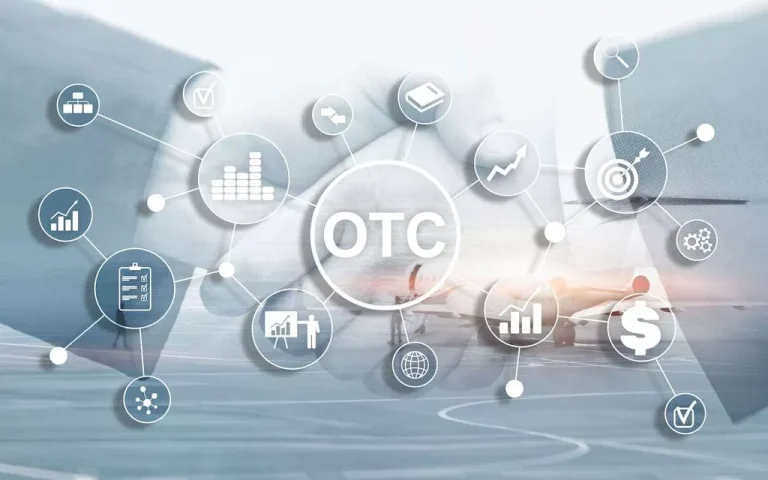Content
At Moralis, we’ve empowered more than 100,000 companies to build, launch, and scale projects. With Cryptocurrency wallet Moralis’ enterprise-grade APIs, including the NFT API, Solana API, and EVM API, you can access all kinds of data across most blockchains. Anyone can access Ethereum, interact with dapps built on top of it, execute transactions, etc. Public blockchains rely on a community of users and stakeholders to make decisions about the network.
Public and Private Blockchains Explained
Deploying and maintaining a private blockchain infrastructure can be costly and complex, requiring significant upfront investment in hardware, software, and personnel. For example, setting up nodes, configuring network parameters, and ensuring compliance with regulatory requirements can involve substantial time and resources. Additionally, ongoing maintenance, upgrades, and which is better public or private blockchain support services may incur recurring expenses for enterprises operating private blockchains. This cost and complexity barrier can deter smaller organizations or startups from adopting private blockchain solutions, limiting their accessibility and adoption. Public blockchains operate in a decentralized manner, meaning no single entity or authority has control over the network.

What is a public blockchain example?
Private or https://www.xcritical.com/ hybrid blockchains, and not public blockchains are the ideal options for real estate firms. There is no censorship to data validation as anyone can conduct transactions, for some others to confirm elsewhere. The parties that keep a cryptocurrency system do not have to know one another, a feature that is antagonistic to the centralization model of private blockchains. As such, the use case of blockchain technology as it borders on cryptocurrencies is most suitable for private blockchain networks. Due to their restricted nature, private blockchains can often achieve higher transaction speeds and greater scalability compared to public networks.
- No “update” or “delete” options are available in neither the public blockchain nor the private blockchain.
- It’s employed in various industries, such as supply chain management, where it can track the movement of goods from origin to destination, ensuring transparency.
- Whether building NFT marketplaces, gaming platforms, or digital collectibles applications, developers can leverage Vezgo’s NFT API to enrich their products with valuable NFT data seamlessly.
- We explore everything you need to know about public and private blockchains in this piece.
- In addition to its prowess in accessing and aggregating cryptocurrency data, Vezgo offers a comprehensive solution for developers seeking to integrate non-fungible token (NFT) data into their products.
- The restricted access, or “trusted” blockchain system, tends to make this more attractive to enterprises who wish to keep some or all of their transaction information private.
What are Public and Private Blockchains?
In addition to using Verifiable Credentials, off-chain data can be linked to a public blockchain by storing a hash of the information on the blockchain. By storing the hash, anyone can verify that the information has not been modified off-chain, as any changes to the original data would result in a different hash. When a transaction occurs, it is verified by the network of nodes (computers) on the blockchain. Each node on the network has a copy of the blockchain, ensuring that everyone has access to the same information and that there is no single point of failure. Ethereum switched from proof-of-work to proof-of-stake (PoS) consensus in part to address energy use. However, PoS security depends on participants offering capital in exchange for trust, which sacrifices decentralization.
Public vs. Private Blockchains: Examples, History, and Comparison

Private blockchains, also known as permissioned blockchains, restrict participation to a predefined group of participants, often requiring an invitation and validation by the network administrator. Private blockchains are typically used by organizations and consortiums that want to leverage the benefits of blockchain technology while maintaining more control over their networks. Public blockchains, also known as permissionless blockchains, are open to anyone who wishes to participate in the network. Anyone can join as a node, submit transactions, and participate in the consensus process to validate and confirm transactions.
For example, blockchain analytics firms can analyze transaction patterns and link addresses to real-world identities, compromising user privacy. Public blockchains are open to anyone with an internet connection, allowing for inclusivity and participation from individuals and organizations worldwide. This accessibility democratizes access to financial services and digital assets, particularly in regions with limited banking infrastructure or government censorship.
We’ve got blockchain guides, Web3 ebooks, and complete tutorials on all things blockchain and Web3. While the technology keeps its participants anonymous, this can provide opportunities for criminally driven activities such as money laundering and human trafficking. Organizations that often use this type of blockchain are those that need to do organizational collaboration. However, it’s less transparent and less anonymous compared to anonymous blockchains.
It could also help chronologically log patient claims — avoiding duplication with distributed ledger on a healthcare company’s centralized network. Each node (a computer connected to the network) has as much transmission and power as any other, making public blockchains not only decentralized, but fully distributed, as well. A public blockchain is a permissionless, non-restrictive decentralized digital ledger available to anyone for use. Data stored on the blockchain and a description of all transactions occurring are accessible to the public as part of a public blockchain.
As a result of the high energy demands, many have criticized public blockchains for their environmental impact. Unlike public blockchains where anyone can join, private blockchains operate as exclusive networks. This controlled environment is often achieved through a process called whitelisting, where specific individuals or organizations are vetted and granted permission to access the network.
In contrast to a public blockchain, a private blockchain is a closed database that uses cryptography to ensure security and comply with the organization’s requirements. Many enterprises use this option to keep some or all of their transactions private or only for internal uses. Public blockchains can serve as a secure and decentralized platform for identity verification and authentication. By storing identity credentials on a blockchain, individuals can control and share their personal information securely, reducing the risk of identity theft and fraud.
Maintaining a private network is expensive, and expansion often requires significant resources. Private blockchains, operating in closed systems, may sacrifice security aspects to improve performance. Security risks are heightened with fewer validators and less scrutiny, exposing private blockchains to internal and external threats. In a recent interview, Jeff Cooperstein, Kadena’s Business Development Lead, highlighted the industry’s shift toward public blockchains, emphasizing the need for regulatory oversight and standardization. Anonymity and privacy are significant parts of the success of blockchain technology.
As blockchain technology continues to mature and evolve, we can expect to see new innovations and solutions that further expand the potential applications and use cases for both public and private blockchains. By staying informed and adapting to these developments, organizations can leverage the power of blockchain technology to drive innovation, efficiency, and security across various industries and processes. Public blockchains that use Proof of Work (PoW) consensus mechanisms require significant computational resources to validate transactions and secure the network. This process consumes a substantial amount of energy, leading to concerns about environmental sustainability and carbon emissions. For example, Bitcoin mining consumes more energy than some small countries, raising questions about its long-term viability and environmental impact. On the flip side, private blockchains are permissioned networks with restricted access.
Private blockchains can often achieve faster transaction speeds due to their controlled ecosystem. While both public and private blockchains are exploring more efficient consensus mechanisms beyond PoW, private blockchains generally have greater flexibility in choosing algorithms that prioritize speed and efficiency. Some organizations usually demand to have a piece of the privacy in a private blockchain as well as the decentralization or other attractive features of public blockchains. This need has birthed a hybrid blockchain system that finds and leverages the points of convergence between these two blockchains.
However, while encrypting data is an important security measure, it is not a foolproof solution. As computing power and technology continue to advance, encryption algorithms can become easier to break, making it possible for hackers to access sensitive data that has been encrypted. This is why Dock never adds Verifiable Credentials or personally identifiable information on the blockchain chain to maximize data security. Verifiable Credentials are a type of digital document that allow individuals and organizations to prove their identity, claims, and qualifications in a secure and decentralized way. The credential data is securely stored on individual user devices such as their phones with a digital wallet app rather than on the blockchain itself or centralized servers that can be vulnerable to data breaches.
It focuses on interoperability and privacy and is used for trade finance, supply chain finance, and other financial applications. For example, Corda can facilitate secure and efficient trade finance transactions between banks and corporations, reducing paperwork and minimizing fraud risks. While private blockchain development offers clear benefits, it’s important to consider potential drawbacks. Its centralized control can raise concerns about potential manipulation by the governing entity, as it deviates from the core principle of decentralization that underpins blockchain technology as a whole. Understanding the nuances of public VS private blockchains is crucial for appreciating the full potential of this technology. Unlike private blockchains with restricted access, public blockchains represent the other side of the public VS private blockchain spectrum.
